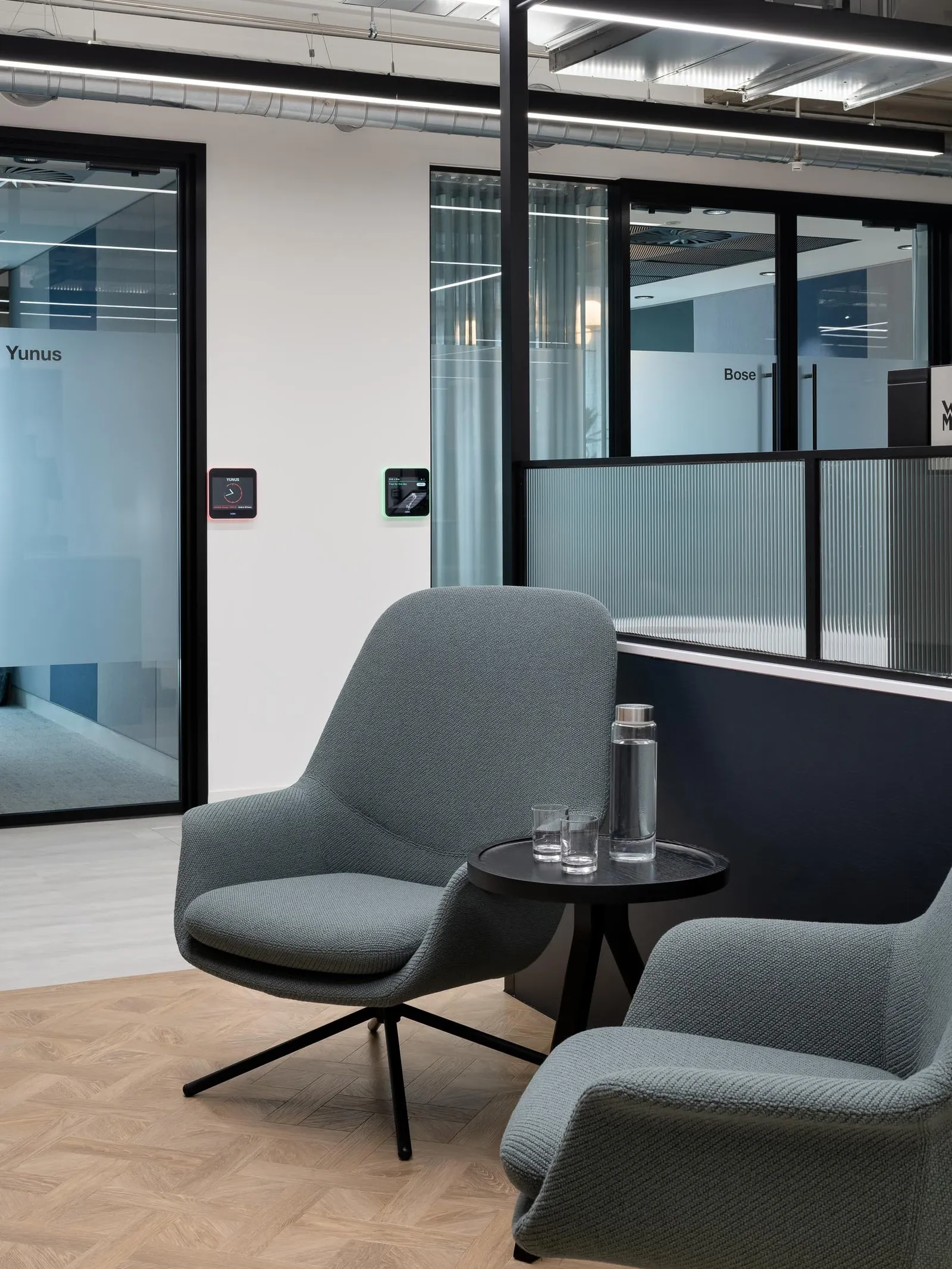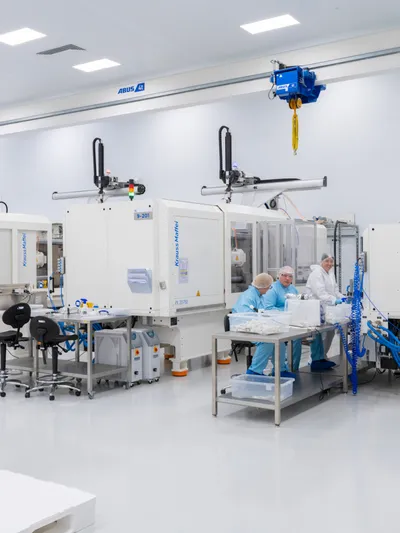The Importance of Design in Quantum Labs
The evolution of quantum research has rapidly evolved in recent years, and with it, the potential to revolutionise many industries has become increasingly apparent. From accelerated drug discovery in pharmaceuticals to advancements in personalised medicine, portfolio optimisation in the finance sector, to improving energy systems and discovering new materials. Thanks to quantum simulations, the possibilities are both vast and transformative.
But how does lab design help to support this work, and ensure that quantum research and innovation can be conducted with precision, scalability, and long-term success?
By creating cutting-edge laboratory environments that adhere to the unique demands of quantum research, design plays a vital role in minimising external interference, ensuring that conditions remain consistent and stable, and fostering collaboration between multidisciplinary teams, ultimately laying the physical foundation for scientific breakthroughs to occur.
What is Quantum Research?
Quantum research studies quantum mechanics, an area of physics that explores how the smallest particles behave under specific conditions. Scientists will conduct experimental investigations to determine how developing revolutionary technologies, such as quantum computing, sensing, and communication, can utilise these behaviours to discover solutions to problems, process and organise information in new and exciting ways, and push the boundaries of what's possible across multiple industries.
The Demands of Quantum Research in Laboratories
Because quantum research involves studying the very minutiae of what happens at a subatomic level, the conditions in which quantum particles can be examined must be stable, precise and devoid of any interference that could skew results. This means that laboratories must be designed to eliminate external environmental factors, such as vibrations or electromagnetic interference. Additionally, extensive specialist equipment, including dilution refrigerators and cryogenic systems, will be required.

Core Design Principles for Quantum Laboratories
Designing a laboratory to facilitate quantum research requires a thoughtful layout, specialist equipment and meticulous control of environmental conditions. Some key considerations include:
Environmental Control
Meticulous control over the environment is one of the most critical factors in lab design for quantum research, as even the slightest fluctuation or deviation from the norm can influence and skew results.
Installing advanced HVAC systems for precise temperature and humidity regulation, as well as implementing vibration control and isolation techniques to protect sensitive experiments, are essential components of designing a quantum laboratory capable of supporting high-precision research and long-term scientific advancement.
Electromagnetic Shielding
Minimising interference from external sources is another crucial consideration when designing laboratories for quantum research, particularly in experiments looking at delicate quantum states such as superposition and entanglement. Faraday cages (enclosures that block electromagnetic radiation or external electrical fields) can be used to minimise interference.
Modularity and Flexibility
Designing adaptable spaces to keep pace with ever-changing research needs is another crucial aspect that quantum laboratory design specialists must consider. By incorporating reconfigurable lab layouts, designers can future-proof the space.
Doing so allows researchers to modify work areas, integrate new technologies, and adapt to changing demands without relying on time-consuming and costly structural overhauls. This innovative and flexible approach not only supports long-term research ambitions but also helps to maximise investment in infrastructure over time.
Safety and Compliance
Any place of work (particularly in laboratories where risks may be higher) must pay particular attention to health and safety guidance and ensure that standards are met. In quantum laboratories, ensuring adherence to safety standards is crucial - designers may have to consider how to safeguard their work alongside high-voltage equipment or handle cryogens, for example.
Human-Centric Design
Creating ergonomic workspaces to enhance researcher productivity and well-being will maximise efficiency and reduce workplace strain, fatigue or injury risks.
Quantum lab designers will consider how to incorporate natural light, encourage collaboration and create spaces for particular kinds of work, such as quiet zones for deep focus and concentration, breakout areas for informal discussions, and flexible workstations that can be easily adjusted to suit different tasks or user preferences. These human-centred design choices not only support individual performance but also contribute to a more inclusive, comfortable, and effective research environment.

The Role of Design in Accelerating Quantum Research Innovation
Lab environments' efficiency and design undoubtedly play an essential role in quantum physicists' continued progress and innovation.
A lab designed specifically for such experiments will ensure that errors and downtime are minimised and that interdisciplinary collaboration happens naturally through carefully designed shared spaces. Incorporating predictions for future technologies into the design will ensure that labs can scale and adapt as research priorities evolve and new equipment emerges.
Experimental methods have become increasingly sophisticated, so providing space that remains fit for purpose in a rapidly advancing scientific landscape is vital.
At Area Laboratories, we are passionate about designing laboratories for research that are not efficient for right now, but have been strategically engineered to enable precision, adaptability, and long-term scientific impact. We aim to empower our labs to enable scientists to make groundbreaking discoveries and inspire scientific breakthroughs.
Our approach considers the unique environmental demands of quantum research, from precision temperature control to electromagnetic shielding, and, perhaps most importantly, a commitment to co-creation with the scientists who will use the space.
A Tailored, Collaborative Process with Area Laboratories
Working with Area Laboratories is a collaborative process from the start. We'll work in close consultation with quantum researchers, engineers, and academic institutions to ensure that each laboratory design is tailored to the specific needs of its users.
By involving these key stakeholders from the earliest planning stages, we can ensure that every detail is purposefully considered, whether that's thoughtful equipment integration, optimising workflow efficiency, or securing environmental stability and future scalability. Our laboratories are not only designed to be technically robust but also truly enable scientific excellence.
Sustainability Built In
Quantum labs use a lot of energy. Our designs thoughtfully mitigate environmental impact. From the materials we use to selecting energy-efficient HVAC systems, we will consider reducing our carbon footprint and enhancing long-term cost efficiencies without compromising on the lab's performance.
Our work spans several high-performance scientific environments, including collaborations with leading research institutions such as Altos Labs, Patheon, and Sartorius. These projects have demonstrated measurable improvements in energy performance, spatial efficiency, and user satisfaction, while meeting the demanding technical standards required for world-class research.
Designs for the Future of Quantum Labs with Area Laboratories
As quantum research continues to evolve at a pace, laboratory environments must keep up, not just reactively, but proactively. While emerging technologies will undoubtedly require new spatial and environmental considerations, by designing future-focused labs now, we can ensure your space is flexible and adaptable, allowing it to be reconfigured to support new research directions.
Quantum research is the key to solving some of the world's most complex problems, but only if it takes place in environments that foster precision, collaboration, and progress. Area's thoughtful laboratory designs will consider all aspects of your current and future operations to catalyse innovation.
We invite stakeholders across the quantum ecosystem, whether research institutions, private sector innovators, or government partners, to prioritise high-performance lab design from the ground up.
Talk to Area Laboratories about your next laboratory design needs today.




